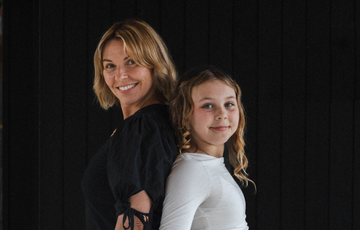When I was growing up, everything I knew about skincare came from teen magazines. That meant pore strips, the infamously gritty St. Ives apricot scrub, and a deep belief that more foam = cleaner skin. Also, I overplucked my eyebrows—dramatically. That’s not technically relevant here, but I regret it and needed to vent.
Anyway, skincare was loud. It was aggressive. It was marketed to make us feel like our skin was a problem to be fixed. Acne? Attack it. Oily? Strip it. Sensitive? Power through.
Now? My skincare philosophy looks very different—and a lot more gentle. The glow-up wasn’t just in the products. It was in the mindset: less is more, and knowledge is power.
High Quality, Low Maintenance
There’s a certain joy in a simple routine. These days, I don’t need a 10-step routine or three different exfoliants. What I need is balance—and a few really good products I can trust.
Stripping it all back helped me notice what was actually working for my skin. No more covering irritation with more product. No more confusing my face with fragrance cocktails. Just clean, effective ingredients and consistency. And honestly? It feels like a breath of fresh air—on my face and in my routine.
In each season, or even on a monthly basis depending on what’s going on with my skin, all of the products I rotate through come from The Six Collection. This month, I’m breaking out bad from the change in weather, so I’ve swapped GLOW for ELEVATE (a lighterweight moisturizer with hyaluronic acid), and BALANCE toner for CLEAN (the oil-based cleanser that balances my moisture barrier like no other).
How to Read a Skincare Label (Without a Science Degree)
At some point, I stopped choosing products based on scent or packaging and started flipping the bottle to read the back. Not every ingredient is scary (and not every “natural” label means it’s good for you).
Learning to decode an ingredient list was like learning a new language—but it helped me feel in control of what I was putting on my body.
For example:
- Caprylic/Capric Triglyceride? That’s just a gentle, skin-softening derivative of coconut oil.
- Tocopherol? Vitamin E!
- Sodium hyaluronate? That’s a form of hyaluronic acid that helps skin hold water.
And then there are red flags: synthetic fragrance blends, harsh sulfates, drying alcohols. Once you spot them, you can’t unsee them. It’s a bit like checking nutrition labels—you just get better at it the more you do it.
Why Natural Ingredients Just Make Sense
I’m not here to tell you natural = better in every single case. But I am here to say: when you can nourish your skin with plant oils, soothing botanicals, and ingredients that your body recognizes and loves—why wouldn’t you?
It’s not just about being “clean.” It’s about supporting your skin barrier, avoiding unnecessary irritants, and choosing products that feel good—literally and ethically.
Plus, the textures and scents of real natural skincare? Chef’s kiss. There’s something grounding about massaging in a body oil made from actual flower petals and seeds instead of mystery chemicals made to smell like them.
The Bottom Line
Skincare has come a long way—from foaming face washes that smell like grapefruit candy, to rich body serums that feel like a full exhale. And so have we.
If you’re feeling overwhelmed by ingredient lists or trying to cut down your routine, just remember: your skin doesn’t need a dozen steps. It just needs care, consistency, and ingredients that make sense.
We build all of our products around this idea. Simple formulas, transparent labels, and nourishing ingredients your skin can actually use. Because good skincare doesn’t need to be complicated. It just needs to work—with your body, not against it.
Want to learn more about decoding skincare labels? Subscribe to our email list for our FREE Ebook—our holy grail of all things natural wellness.





